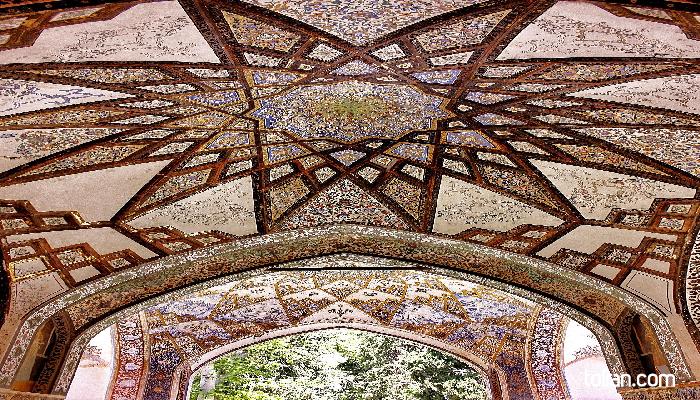Fin Garden is one of the most historically significant examples of garden and garden architecture in Iran as it is a complex combining the architectural features of Safavid (1501-1722), Zand (1750–1794) and Qajar (1785–1925) periods.
It is believed that the garden’s name comes from the ancient Persian word ‘Pin,’ meaning ending as the area the garden is located was the ending point of the city. Locals often refer to this garden as the ‘King’s Garden,’ due to its vastness.
While the first mention of this garden in history was made 1,200 years ago when Ya'qub ibn al-Layth al-Saffar (840 – 879), the founder of the Saffarid dynasty (861–1003), and his army stumbled upon this garden, it is the Safavids who must be credited for the gardens current layout.
Like many other notable Persian gardens of the Safavid era, Fin Garden, was originally designed for Shah Abbas I (1571-1629), to offer him a Persian perspective of paradise.
Fin Garden is modeled on the Char Bagh School, which is a quadrangular plan of Persian Paradise Garden and shelters the remains of Shah Abbas' two-story palace and other Safavid royal buildings. The Safavid buildings were decorated with colorful, delicate paintings on the walls and ceilings. Some of these Safavid decorations, which were replicated in Ali Qapu and Chehel Sotoun monuments in Isfahan, were later covered with plaster by the Qajars.
Although the Qajars substantially replaced and rebuilt many of the Safavid structures, the layout of trees and marble basins have remained roughly intact.
The garden's circulating pools, canals lined with blue-green tiles, and fountains have been craftily constructed to operate without the need for mechanical pumps.
The nearby Soleimanieh Spring combined with a brilliantly designed underground water management system (the Qanat), provides an abundant supply of water, which flows into several pools used for watering the garden's extensive orchards containing some 579 cypress and 11 plane trees.
Locals believe Solomon the prophet created the 7,000-years-old Soleimanieh Spring as a miracle and that the water of this spring has healing properties.
The main courtyard, the most important feature of the garden, is surrounded by four ramparts and towers and spans an area encompassing 1.7 hectares of the 2.3-hectare garden. A central passage in the main courtyard connects the Sardar khaneh (loft) at the front of the garden to the Shahneshin (alcove) at the end of the garden.
The Fin Garden is an example of the UNESCO registered Persian Garden.






One of the most beautiful Persian Gardens which attracts the same amount of Iranian visitors as well as foreign tourist to itself each year. It's about 20 minutes from the city center, besides the famous event of Amir Kabir's assassination in here I am amazed by the water system design for the garden. Beautiful turquoise colored water fountains and tiles are among other many features of Fin Garden. As one of the main attractions of Kashan, make sure you don't miss it while visiting the city.
Amazing historical Persian garden, i was amazed by the intelligence behind building it.
Beautiful and mesmerizing garden, make sure to visit early morning since it can get very crowded.
کاشی های آبی نهرهای باغ فین زیر درختان باغ مثل آینه عمل می کنند و تصویر آسمان را در آب بهتر منعکس می کنند. فضای خیره کننده ای بود . بسیار دوست داشتنی بود.